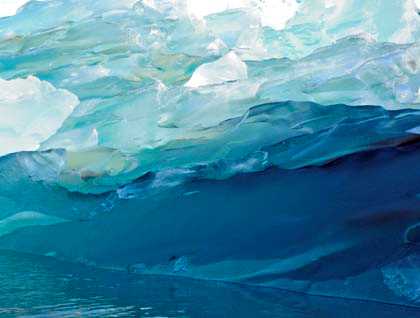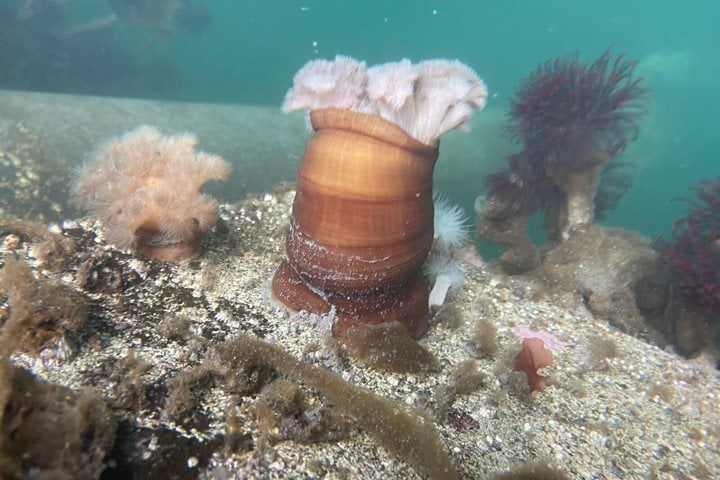Adjusting our camera settings for bright sunlight reflecting off blue, clear and white glacial ice may have been today’s biggest challenge. One of our naturalists remarked that in about 150 trips into Tracy Arm fjord, he has experienced this magical place calm and sun-drenched perhaps ten times.
Early, before the sun’s first rays crested the fjord walls, we contemplated a black bear engaged in scraping barnacles from low-tide exposed rocks and slurping up the ensuing chowder. Mmmmm. The intertidal protein resource is incredibly important to the bears just coming out from their winter dens. High above, specks of mountain goats grazed on newly green leafy bits. The fjord narrowed, sunlight poured over the edges onto the rocks and waterfalls, shadows disappeared and after breakfast we moved into view of the South Sawyer Glacier, just twelve miles from the border with Canada.
Inflatable boats took us closer to the beautiful blue ice face of the rapidly receding Sawyer Glacier. Dozens of arctic terns have recently arrived from their long Antarctic migration and they swooped over us on their impossibly delicate fairy wings and plucked tiny fishes from the milky water. Snowmelt tumbled thousands of feet down the mountain and cascaded into the sea. The glacier cracked loudly and dropped chunks of ice, churning up the water at the face and offering a feeding opportunity to the hungry birds getting ready to nest on the nearby rocks.
The area where we kayaked this afternoon was the ice edge when John Muir, Reverend Young, and their Tlingit contingent arrived in a cedar canoe in 1880. This fjord held some of the answers Muir had hoped for, great domes of granite carved by ice - the answer to the formation of Yosemite, that place that so fired John Muir’s imagination.
Our journey through Southeast Alaska’s coastal wilderness has fired our imaginations too. How reassuring to us all that wild places and intact ecosystems continue to dominate this special corner of our extraordinary planet.









